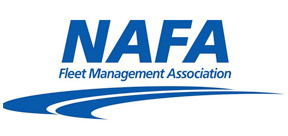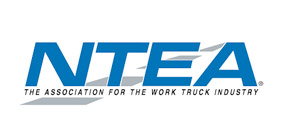Part 2 – Social media guidelines: How discernment aids local government transparency

Though helpful when trying to discern clarity amid obscurity, mindfulness is often neglected. Simply defined, mindfulness is the practice of being decisively aware. Thus, in application, before choosing how to respond, mindful officials will pause and deliberately ponder what the public wants and the circumstances that may be motivating the request.
Responsiveness
Responsiveness is a tool to help ensure that what was requested is actually delivered. A responsive delivery of information includes the reply to the stated request, and a) considers other information that may be helpfully associated and b) is sensitive to timeliness. For example, after receiving a request for hiring process information for new safety service employees, officials may also include the procedure used for other new hires in different departments. This additional information, though not requested, may satisfy the constituent’s overall question as to systematically fair and equitable hiring practices.
Situational Awareness
This is the ability to perceive conditions surrounding information requests acutely. Situational awareness is more specific than general mindfulness. Instead, situational awareness takes a deep dive into understanding events, activities, trends, and communication potentially associated with a request. This tool aids in understanding the constituent’s perception so that the information delivery wholly satisfies the information need.
Professionalism
Information delivery is a challenge only partly solved. Ensuring that the information is delivered in a courteous tone and free of substantive errors is essential to satisfying the petitioner. Understandably, professional tone and language improve information delivery so that it is effectively received. Additionally, documents delivered that are proofread and examined for accuracy garner confidence-increasing credibility by the public.
Discerning tools are the ideal ingredient within IDG. They help local governments respond to the public in a meaningful and effective manner. By acting as safeguards to sincere but potentially poorly received responses, the use of discerning tools protects the LG and continues to build public confidence in transparency and trust.
Delivering information with discerning care
LG officials should recognize that government-initiated information exchange results in better responsiveness than citizen-initiated (Dekker & Bekkers, 2015). This phenomenon is due to the difference in which government and citizens initiate information exchange. Typically, governments form information feeds based on public policy laws, pending public-interest policies, and reports of recent administrative and legislative actions. Conversely, citizen-initiated information feeds are generally reactive as they produce a psychological distance between citizens and LGs (Porumbescu, 2016). This psychological distance usually stems from citizens’ responses to negatively perceived LG actions. Moreover, one can understand that this adverse reaction could result in a weakened opinion of responsiveness when compared with a more neutral government-initiated information feed. Thus, delivery of information using discernment is useful in building a positive public perception of responsiveness and sincerity.
Successful Information Delivery: Hitting the Mark
As discussed previously, discerning information delivery guidelines help LGs gain clarity amid public perception obscurity. The ultimate target of information delivery is to satisfy the public’s information need in a manner that engenders positive relations (Phase 4 of Figure 1). Having experienced positive relations with their respective LG, constituents are emboldened to shed positive light within the social media realm. Thus, instead of a negative social media firestorm, the public becomes the mouthpiece praising LG transparency. Understandably, hitting the mark every time is not realistic. However, this article argues that the persistent practice of establishing discerning tools within IDG has a profound impact on the public’s perception of LG trustworthiness and transparency.
Confirming the Need for Discernment and IDG
The need for LGs to adopt IDG within social media policies is evident. Although this article does not delve into specific policy elements, it supports the notion that the adoption of discerning IDG leads to the effective delivery of public information. Further, it reinforces the idea that failure to discern and target a citizen’s needs and preferences can result in a reluctance to accept new knowledge presented by the LG. Adopting IDG provides opportunities to change the public’s perception of LG from distrust to that of trust. Though public interest in government openness and transparency is pervasive and social media information exchange platforms are ubiquitous, research analyzing how to bridge the two effectively is still in an early stage. Due to the pervasiveness of social media as the primary source of information and the continued concern over the decline in public trust, further exploration concerning IDG is warranted.
Implications of the enactment and practice of IDG could prove significant to overall public policy, perceptions of government openness and transparency, reduction of government corruption, and government-citizen cooperation in public projects and decisions. Considering the widespread unrest within many LGs, there is no better time than the present to practice discernment in service to the public’s need.
Part one of “Social media guidelines: How discernment aids local government transparency” ran in the November 2024 issue of The Municipal.

About the Columnist
Jordan Daugherty, administrator at the village of Whitehouse in Northwest Ohio, works in the town where he grew up. Conscientious of the trajectory of government at large, he particularly focuses on the need for local governments to transform into bodies deserving public trust. His 17 years of working in municipal leadership have given him a vision for guiding local government from a mindset of unimaginative toward progression. Daugherty received his doctorate in organization development and change (D.ODC) from Bowling Green State University and is a Certified Public Accountant (retired). He also sits on the board of the Northwest Ohio Advanced Energy Special Improvement District. While he ardently works to cause efficient and effective organizational change, his ultimate passion is his gracious wife and 12 children. Daugherty can be reached at jdaugherty@whitehouseoh.gov.
Reference BOX
References
Amad, Irfan. (2019, January 1). The most popular social media platforms of 2019. Digital Information World. Retrieved from https://www.digitalinformationworld.com/2019/01/most-popular-global-social-networks-apps-infographic.html
Ambrose, S. A., Bridges, M. W., DiPietro, M., Lovett, M. C., & Norman, M. K. (2010). How learning works: seven research-based principles for smart teaching. San Francisco: Jossey-Bass.
Daugherty, J. & Schriefer, M. (2021). Model of Four Phases to Ensuring Effective Information Delivery Via Social Media [Figure].
Dekker, R., & Bekkers, V. (2015). The contingency of governments’ responsiveness to the virtual public sphere: A systematic literature review and meta-synthesis. Government Information Quarterly, 32(4), 496-505. doi: http://dx.doi.org/10.1016/j.giq.2015.09.007
Hendrix, M. (2019, March 4). The case for local government. Retrieved from https://www.realclearpolicy.com/articles/2019/03/04/the_case_for_local_government_111089.html
Köseoğlu, Ö., & Tuncer, A. (2016). Designing social media policy for local governments: opportunities and challenges. Public Administration and Information Technology, 15, 23-35. doi: 10.1037/0278-6133.24.2.225
Merriam-Webster. (n.d.). Discernment. In Merriam-Webster.com dictionary. Retrieved April 20, 2021, from http://www.merriam-webster.com/dictionary/discernment
Porumbescu, G.A., (2016). Comparing the effects of e-government and social media use on trust in government. Public Management Review, 18(9), 1308-1334. Retrieved from http://dx.doi.org/10.1080/14719037.2015.1100751
Stamati, T., Papadopoulos, T., & Anagnostopoulos, D. (2015). Social media for openness and accountability in public sector: Cases in the Greek context. Government Information Quarterly, 32(1), 12-29. Retrieved from http://dx.doi.org/10.1016/j.giq.2014.11.004
Wukich, C., Mergel, I., (2016). Reusing social media information in government. Government Information Quarterly 33, 305-312. Retrieved from http:dx.doi.org/10.1016/j.giq.2016.01.011



